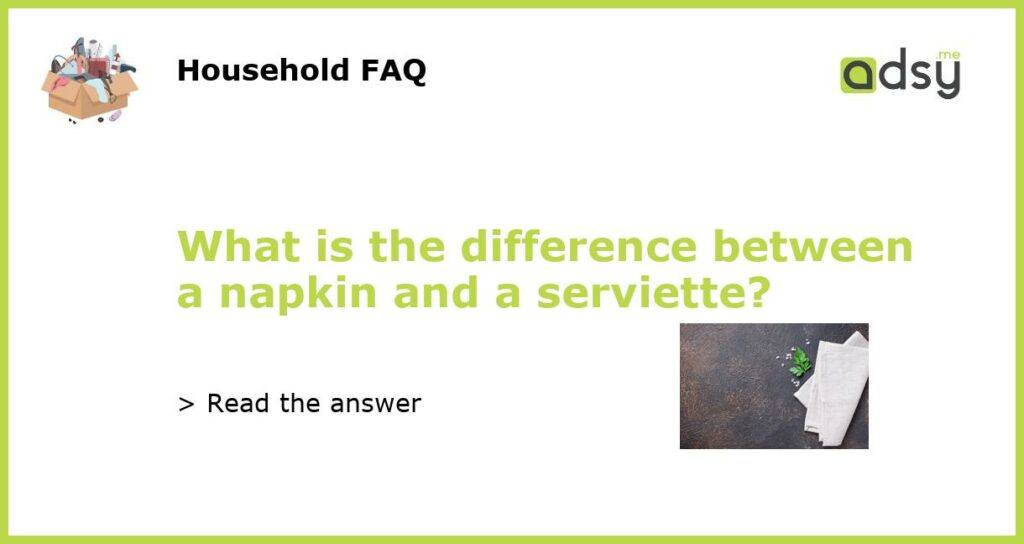The Basics: Napkin vs. Serviette
Have you ever been at a fancy restaurant and wondered why the waiter asked if you preferred a napkin or a serviette? It turns out that these two terms are often used interchangeably, but there is a slight difference between the two.
The Origins of Napkins and Serviettes
The word “napkin” originates from the Old French word “nape,” which means tablecloth, and it was used to refer to any piece of cloth that was used to clean the body or face. “Serviette,” on the other hand, comes from the Latin “sindon,” which means a piece of cloth used for cleaning things, such as vessels or utensils. The term “serviette” is primarily used in British English, while “napkin” is more common in American English.
The Differences in Usage
The use of the terms “napkin” and “serviette” can depend on the context and location. In some places, “serviette” is used to refer to the paper version of the cloth napkin. In other places, the terms can be used interchangeably. “Napkin” is generally considered to be the more formal term, while “serviette” is used more commonly in everyday situations.
Navigating Cultural Differences
With the global nature of society, it’s important to be aware of cultural differences in language usage. For example, if you’re traveling to the UK, it’s a good idea to use the term “serviette” instead of “napkin,” even if you’re accustomed to using the latter term. Similarly, if you’re serving international guests, it’s important to be aware of which term they might be more familiar with and use it accordingly.
While the terms “napkin” and “serviette” may seem interchangeable, there is a subtle difference in their origins and usage. Paying attention to these nuances can help navigate cultural differences and avoid any confusion when dining or entertaining guests.






